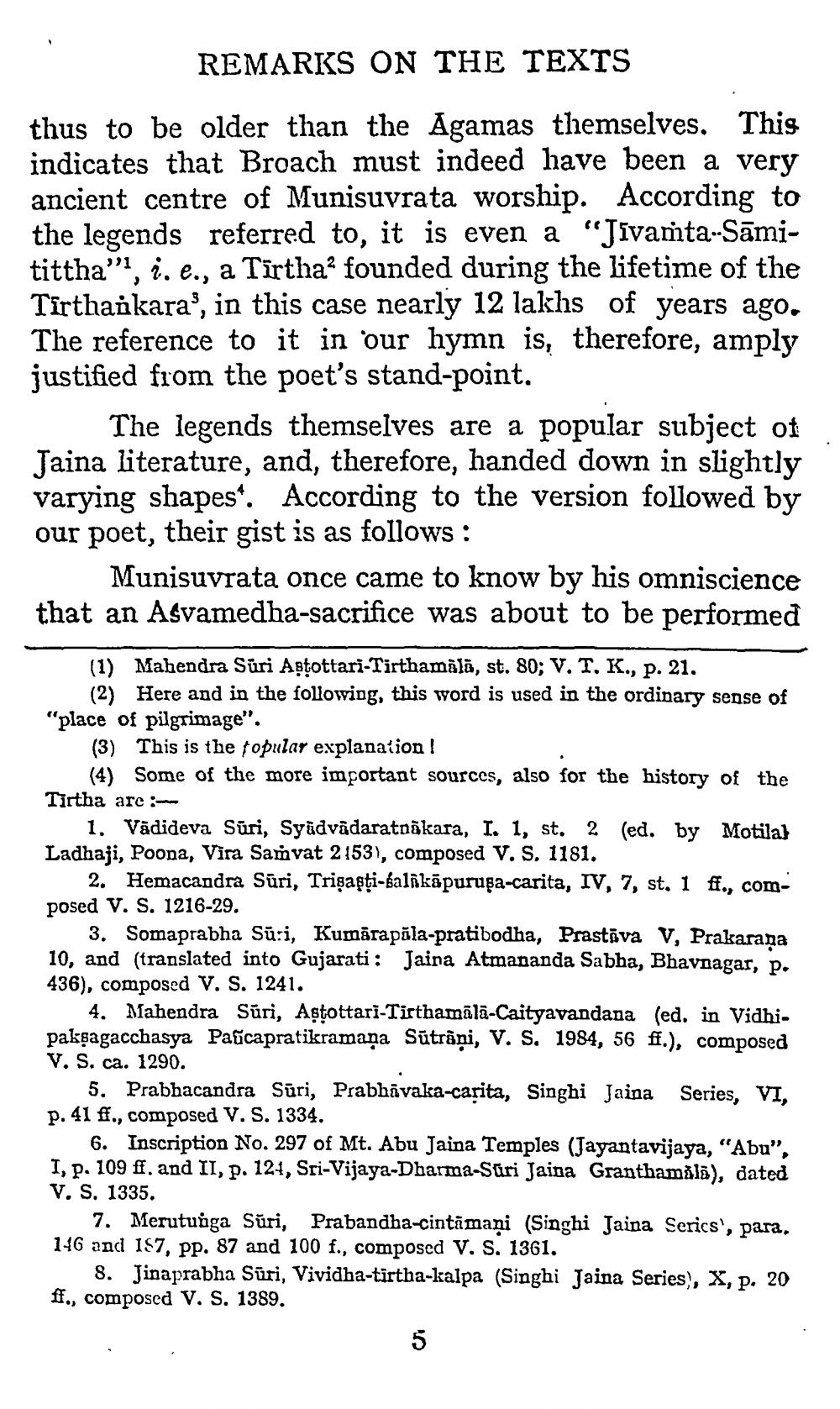________________
REMARKS ON THE TEXTS
thus to be older than the Agamas themselves. This indicates that Broach must indeed have been a very ancient centre of Munisuvrata worship. According to the legends referred to, it is even a "Jivamta.-Sāmitittha', 1. e., a Tirtha’ founded during the lifetime of the Tirthankara', in this case nearly 12 lakhs of years ago. The reference to it in our hymn is, therefore, amply justified from the poet's stand-point.
The legends themselves are a popular subject of Jaina literature, and, therefore, handed down in slightly varying shapes. According to the version followed by our poet, their gist is as follows:
Munisuvrata once came to know by his omniscience that an Asvamedha-sacrifice was about to be performed
(1) Mahendra Suri Astottari-Tirthamalā, st. 80; V. T. K., p. 21.
(2) Here and in the following, this word is used in the ordinary sense of "place of pilgrimage".
(3) This is the topular explanation !
(4) Some of the more important sources, also for the history of the Tirtha are:
1. Vädideva Sūri, Syüdvådaratnākara, I. 1, st. 2 (ed. by Motila) Ladhaji, Poona, Vira Samvat 2153), composed V. S. 1181.
2. Hemacandra Sūri, Trişaşți-balâkāpuruga-carita, IV, 7, st. 1 ff., composed V. S. 1216-29.
3. Somaprabha Sūri, Kumārapăla-pratibodha, Prastāva V, Prakarana 10, and (translated into Gujarati : Jaira Atmananda Sabha, Bhavnagar, p. 436), composed V. S. 1241.
4. Mahendra Sūri, Astottari-Tirthamālā-Caityavandana (ed. in Vidhi. pakşagacchasya Pancapratikramaña Sūtrāņi, V. S. 1984, 56 ff.), composed V. S. ca. 1290.
5. Prabhacandra Sūri, Prabhāvaka-carita, Singhi Jaina Series, VI, p. 41 ff., composed V. S. 1334.
6. Inscription No. 297 of Mt. Abu Jaina Temples (Jayantavijaya, "Abu”, I, p. 109 ff. and II, p. 124, Sri-Vijaya-Dharma-Süri Jaina Granthamålā), dated V. S. 1335.
7. Merutunga Sūri, Prabandha-cintīmaņi (Singhi Jaina Serics', para, 146 and 187, pp. 87 and 100 f., composed V. S. 1361.
8. Jinaprabha Sūri, Vividha-tīrtha-kalpa (Singhi Jaina Series, X, p. 20 ff., composed V. S. 1389.




